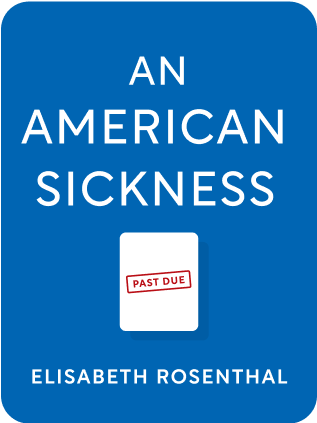

This article is an excerpt from the Shortform book guide to "An American Sickness" by Elisabeth Rosenthal. Shortform has the world's best summaries and analyses of books you should be reading.
Like this article? Sign up for a free trial here .
When did the U.S. Medicare program start? What kinds of coverage does it provide?
Medicare is the national U.S. health insurance scheme that covers citizens over the age of 65, young adults with certain disabilities, and people with permanent kidney failure. The history of Medicare dates back to 1965 when, under the leadership of President Lyndon Johnson, it was enacted under Title XVIII of the Social Security Act.
Keep reading to learn more about the history of Medicare and how it worked in its infancy.
A Brief History of the U.S. Medicare Program
The history of Medicare dates back to the 1960s when President Lyndon Johnson enacted it into law. At that time, healthcare reimbursement was generally fee-for-service. Providers charged as much as they could, and insurers generally paid it out. From 1967 to 1983, Medicare payments to hospitals increased from $3 to $37 billion.
With more money rolling in, hospitals hired administrators, who helped steer the organization toward financial performance. Physicians were influenced to focus on more profitable care, told what procedures to perform, given bonuses scaling with revenue they brought in, compared publicly to other doctors on revenue, and even told to attend charm school to make more revenue. Likewise, nurses became “clinical nurse-managers” armed with statistics on billing.
Healthcare costs were getting out of control, so to clamp down on charges, Medicare revised payments to a “diagnosis related group”—essentially, a fixed bundled amount based on the diagnosis. Medicare would pay a fixed amount for an appendix removal.
Similarly, HMOs had a heyday in the 1990s, where the PCP would be a gatekeeper for followup care and provider access was limited. The author says that patients hated them because they were poorly designed and managed. (Shortform note: however, patients also disliked being unable to get access to any doctor they wanted on demand.)
Hospital Reimbursement
Hospitals provide the medical service to the patient, then are reimbursed by the payers (insurers) for the service. This practice has led to a complicated set of billing practices and gamesmanship to maximize hospital earnings. Hospitals employ reimbursement consultants to adjust their prices and billing practices to earn more money.
The high sticker price given by hospitals is a negotiating point with payers (insurers). Bigger payers pay a smaller fraction of the list price than smaller payers and the uninsured.
Medicare assigns to every hospital an overall cost-to-charge ratio it considers reasonable. This is meant to constrain the profit percentage that hospitals can make. However, this regulation turned billing into a strategic game. For example, hospitals adjusted their prices to maximize billing. They lowered charges for items that are often not reimbursed (like gauze) and boosted charges for what is reimbursed (OR time, oxygen therapy).
This led to a perplexing practice where a single procedure, like an overnight stay in the hospital, can be billed separately as a wide array of items. This is why a hospital bill can include dozens of charges, including individual Tylenol pills and charges for each separate doctor’s time..
Billing is done aggressively, to the limit of what is acceptable for the service provided. This is called “upcoding.” For example, a simple blood draw can be classified as a level 5 doctor visit. Optional services can be added to increase billing, without necessary patient benefit—using ultrasound to inject steroids in a knee adds $300.
Providers and vendors lobby to get new conditions treated as diseases, since this legitimizes billing for the disease. For instance, if obesity is recognized as a disease, it gets assigned billing codes, which pressures insurers to cover it. (Shortform note: it’s that our conception of health and disease, which should be fairly objective, are molded by the providers and their financial incentives.)
When new treatments appear, there is often a frenzy to promote it and set the billing standards. Because the finances of the new treatment are unpredictable and patient numbers are small, the reimbursement policy may start off being lax; this may let the cat out of the bag and make it difficult to constrain costs later.
- For example, within cancer, proton beam therapy was a new treatment option in the early 200s. Each machine was expensive, costing more than $100 million, and financing appeared to get the machines installed at hospitals. Unsure how to price the treatment, Medicare reimbursed generously. However, ultimately proton beam therapy had little proven benefit over cheaper options. The damage was already done—more machines were installed per capita in the US than in Canada and the UK, whose nationalized health services balked at the expensive treatment.
Observation Status
Billing can cause changes in how hospitals practice care.
One example: admitting patients for “observation” means admitting them for monitoring before deciding on a treatment. Due to quirks in billing, hospitals get paid more for patients under observation. Essentially, Medicare pays bundled rates for inpatient admissions, but not for outpatient care, which observation fits under. Under observation, hospitals can charge per service as they like.
This has led to situations where patients were admitted under “observation status,” underwent a battery of tests, then were charged far more than if they had merely been admitted as an inpatient.
Setting Incentives
As hospitals try to maximize how much they get paid, this fitlers down into how they manage their departments and employees.
Focusing on Profitable Departments
Hospitals are increasingly getting rid of unprofitable departments (such as the emergency room, labor and delivery, dialysis, drug treatment, and Medicaid outpatient care) and focusing on profitable offerings (such as orthopedics, cardiac care, stroke center, and cancer care).
They even make money on outsourcing care—hospitals can sell patients to dialysis centers for $40,000-$70,000 per patient.
Physicians
Physicians are often compensated in proportion to the relative value units (RVUs) they bill, which is based on complexity of exams and treatment plans. This sets an incentive for physicians to bill as much as they can.
The EMR software doctors uses even give tips on checking the right boxes for upcoding (“you need to check two more boxes for a level 4 visit”).
Hospitals also allow providers to add an outpatient facility fee on top of their billing. Historically, insurers allowed this as an analogue of the inpatient daily rate. However, this has become a strong incentive for doctors to perform procedures in a surgicenter, rather than in their less expensive office.
Resident Trainees
Medical graduate stipends are paid by federal and state funds. Hospitals get $15 billion to support training, including “indirect payments” to compensate for losses of efficiency in training new doctors. However, the author argues there is little evidence training hospitals are any less efficient than non-teaching hospitals, so these indirect payments are just free money.
The author also argues that hospitals profit from cheap resident labor. The median cost for a resident in 2013 was $135k, including a salary of $50k-80k. Of this total cost, federal support totals $100k, covering most of the cost. However, the value of work done by resident is $233k, far greater than what the hospital pays the resident.
Hospitals enjoy this cheap labor and lobby to get more residents. The American Hospital Association has lobbied to get foreign medical graduates, especially for less lucrative specialties like nephrology. They also need to respond to regulations that capped the number of hours residents could work, since this creates a relative staffing shortage.
Adding Amenities and Focusing on Service
Most hospitals are non-profit. Instead of distributing their profits to shareholders, they spend the operating surplus on expansion, amenities, and executive compensation.
One area hospitals spend a lot of attention on is customer satisfaction. Press Ganey is a survey tool that allows patients to rate their experience at hospitals. They also publish rankings. To try to improve their ratings, hospitals have spent a lot of money on amenities and patient comfort. In the past, hospital rooms with four beds were common; nowadays, single private hospital rooms have become the norm, even though there is little proof this is more cost effective and many insurers won’t cover them (leaving the patient with the bill).
A focus on customer satisfaction may not lead to better care. If a patient asks for a test, giving it to them increases satisfaction and avoids the trouble of explaining why they don’t need it. Ultimately, the medical system, and we as patients, pay for this.
The author bemoans that hospitals spend so much on new facilities and amenities without increasing the salaries of doctors and medical staff.

———End of Preview———
Like what you just read? Read the rest of the world's best book summary and analysis of Elisabeth Rosenthal's "An American Sickness" at Shortform .
Here's what you'll find in our full An American Sickness summary :
- How U.S. healthcare got to the state it's in today
- Why it's so difficult to make any changes to the healthcare system
- What you can do to lower your personal healthcare costs






